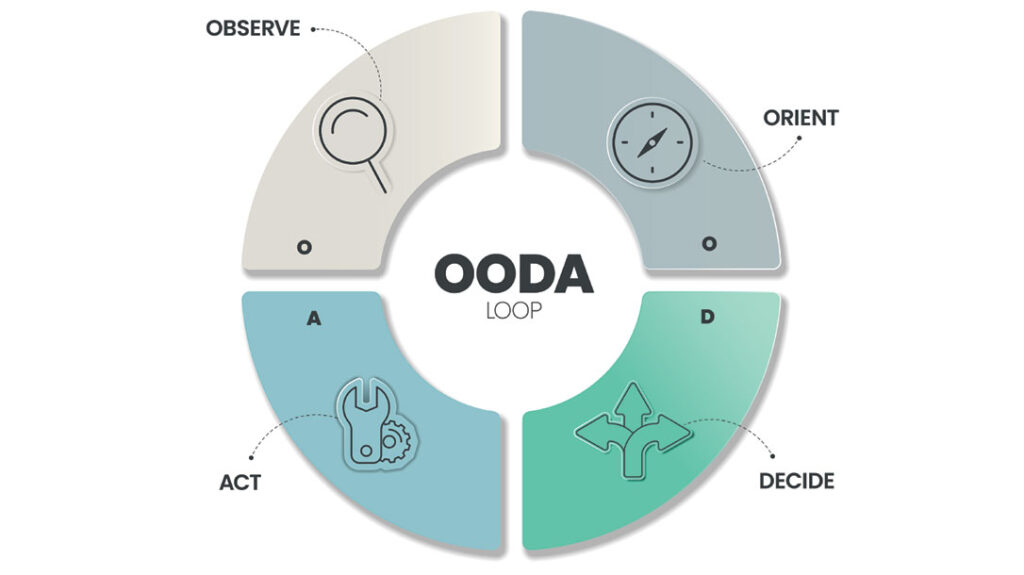A large part of personal defense is remaining aware of your surroundings and preemptively identifying potential threats. Two fundamental concepts for becoming a hard target and enhancing situational awareness are the OODA Loop and the once-iconic Navy EOD motto. Let’s explore these ideas further.
The OODA Loop
In researching situational awareness for this article, I consulted individuals who met specific criteria. They carried concealed weapons but lacked law enforcement training. My goal was to understand how everyday Americans protect themselves. What I discovered instilled a sense of pride in American gun owners.
Few had a structured approach to enhancing situational awareness. Instead, they relied on instincts and danger recognition. While crucial, I believe implementing a systematic approach could alleviate the fatigue of constant vigilance.
Advertisement — Continue Reading Below
The OODA Loop, coined by Air Force Colonel John Boyd in the 1950s, was instrumental in enhancing combat effectiveness among fighter pilots. It stands for Observe, Orient, Decide, Act.

Boyd’s research showed that fear, denial, and fatigue slowed decision-making and led to tactical errors. By training pilots to cycle through this loop rapidly, Boyd achieved remarkable success even against superior forces. Similarly, civilians can apply this framework to enhance everyday situational awareness and threat detection.
Advertisement — Continue Reading Below
We’ve all experienced moments where our instincts signal potential danger—a gut feeling that something isn’t right. In such instances, we instinctively begin the OODA Loop: observing the situation, orienting ourselves to potential threats, deciding on appropriate actions, and acting accordingly.
Most of the time, it turns out to be nothing. However, occasionally, these instincts prove crucial in identifying real threats that demand immediate response.
Consider a scenario: you hear a gunshot. Instantly, you observe the source, orient yourself towards the threat, decide on a course of action (perhaps drawing your EDC), and act to neutralize the danger. This simplified example demonstrates the practical application of the OODA Loop.
Advertisement — Continue Reading Below
The Navy EOD Motto: Words to Live By
Once you’ve committed to action, mindset becomes crucial. Here, the Navy EOD motto, “Initial success, or total failure,” resonates deeply. This motto underscores the decisive nature of critical moments—you either succeed and return home safely or the outcome shifts beyond your control. Embracing this mindset prepares individuals for the gravity of life-threatening situations.
Boyd’s insights also highlight the psychological aspect of combat: inducing fear, denial, and fatigue in adversaries by disrupting their OODA Loops. To succeed in defending oneself, one must train rigorously—mind, body, and spirit. This preparation minimizes errors in one’s own OODA Loop and exploits vulnerabilities in adversaries.
While contemplating such scenarios may be unsettling, Benjamin Franklin’s wisdom rings true, “An ounce of prevention is worth a pound of cure.”
Advertisement — Continue Reading Below
Preparedness is not paranoia; it’s prudent readiness for unforeseen challenges.
























